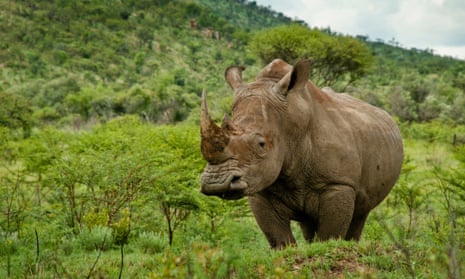A drone hovering in your neighborhood might spark fear and outrage at first. But, thankfully, these devices are no longer only the preserve of the military.
Aside from Amazon’s well-publicized application to test drones for package delivery earlier this month, there are all manner of new uses coming on stream – everything from weddings to the farm. And some of these have sustainability applications.
A multirotor drone by UAV-America, for instance, is helping a South African game reserve protect the much-sought-after white rhino. It’s equipped with infrared thermal imaging and daylight cameras that patrol from the skies to keep the reserve safe from poachers after their horns.
Droning on
Meanwhile, a company called Snap Vision Technologies has turned to Kickstarter to unveil a device designed to give farmers a bird’s eye view their crop. StitchCAM, as it is called, is promoted as a way to help farmers increase yields and manage water use. The backers believe the technology could be used in the United States, as well as in the developing world, if they can afford the $2,800 price tag.
Bill Robertson, the company founder, said he was inspired to develop the technology after watching his uncle’s hard work to get reliable information on their crops in Iowa. “It’s time to put drones to work in applications that will make a difference to industry and to society,” said Robertson, who holds a master’s degree in mechanical engineering from Stanford. The StitchCAM system includes a drone, a table computer and proprietary software to produce detailed images of a farmer’s emerging crop. But is this technology before its time – or too limited in its target market? So far, the company is falling short of its $100,000 goal on Kickstarter in early August, raising only about $9,700 so far with only a few days to go. Here is one downside: if it succeeds, farmers may become armchair specialists and won’t have to walk the fields anymore to get at look at the condition on the ground. So perhaps they will get less exercise – although there’s definitely an app for that.
Smash that cup!
So, you’re waiting in line for your favorite barista to serve up your morning jolt and in walks someone with an earth-friendly coffee cup. And suddenly waves of inadequacy waft over you.
Yet at the same time you hate carrying around one of those gauche travel mugs all day – even though, if you’re like many American office workers, you toss away an average of 500 paper cups a year.
Fear not, there may be a solution on the way. Ben Melinger, manager of the Kickstarter project Smash Cup, plans to soon sell a cup that’s quick to open and collapses into something small enough to fit in your pocket or just about anywhere else.
It’s the coffee drinkers’ version of the collapsible dog bowl, and it’s expected to sell for $18 and be made from eco-friendly materials. Smash Cup even employs a catchy slogan: “Sip it. Smash it. Stash it.”
A lot of people seem to like the idea, as the project has raised nearly $89,000 on Kickstarter as of Thursday, many times higher than its original goal of $10,000.
Chicago deep dishes carbon
Chicago offers jazz, a spectacular skyline and deep-dish pizza. What more could you want? How about an energy efficiency plan for its iconic buildings that will help the city keep one step ahead of the US Environmental Protection Agency?
With a clunky moniker, the Retrofit Chicago Commercial Buildings Initiative, the Second City launched a program two years ago to squeeze energy savings of least 20% from its buildings over five years.
The program launched in 2012 with 14 buildings, spanning 14m square feet of space. It has continued to expand (pdf) and, as of June, was estimated to include 48 buildings, some more than a century old, covering 37m square feet of space.
And the plan is working, according to a new report by the Natural Resources Defense Council. The buildings slashed energy usage by 7% in less than two years, saving $2.5m in energy bills. Better yet, it has eliminated 28,000 metric tons of CO2 emissions, which is like taking nearly 6,000 cars off the road annually.
“Chicago is probably America’s most architecturally aware city, so it is no surprise that the skyline is taking the lead in fighting climate change and giving us more resilient infrastructure,” said NRDC Midwest Director Henry Henderson.
A more practical win: Chicago’s gains will help the state of Illinois meet the tough new emissions standards proposed by the EPA.
This is the second story in ‘Oddly Sustainable’, a new series. If you have any ideas for future blogposts, please leave them in the comments.
More Oddly Sustainable posts:
- Surprising solutions to environmental dilemmas
- Getting a charge in Vegas that’s good for your wallet
- Powering your computer with cigarette butts
- A gold-rush retailer’s thoroughly modern social impact move
Russ Blinch is chief scribbler at CopyCarbon.com and a blogger for the Huffington Post.
The technology and innovation hub is funded by BT. All content is editorially independent except for pieces labelled advertisement feature. Find out more here.

Comments (…)
Sign in or create your Guardian account to join the discussion